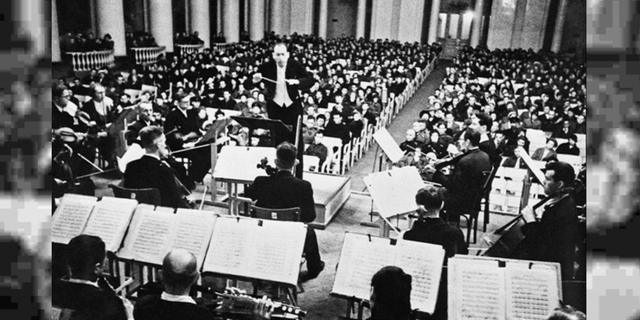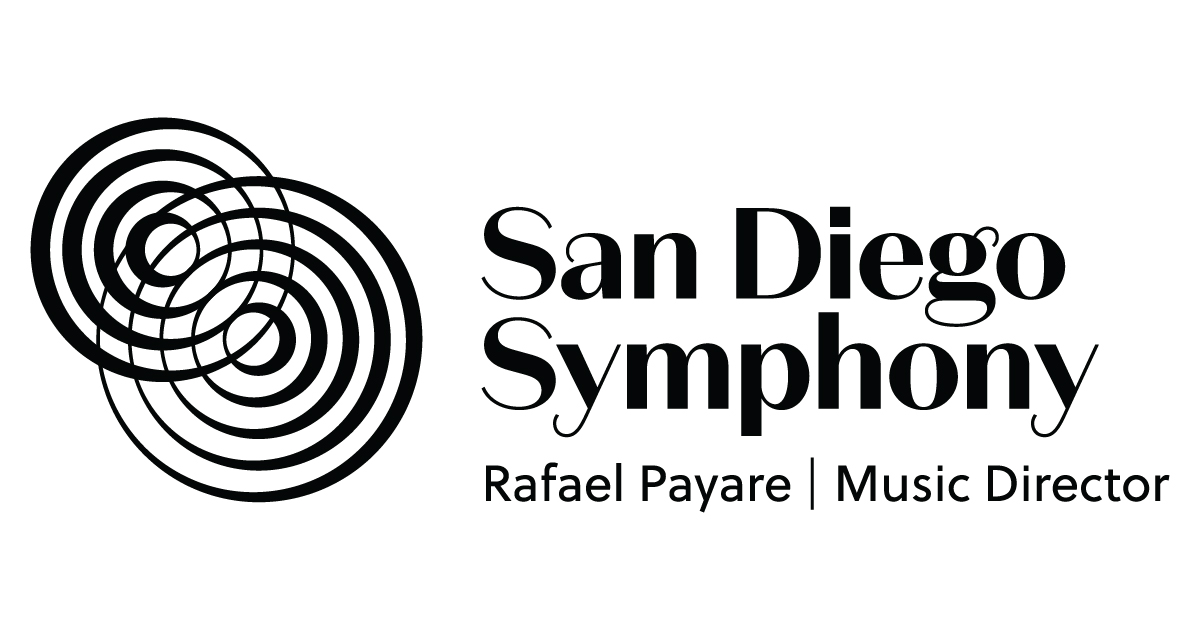Dual orchestras make history in San Diego

"I hear that the score of my Symphony has been safely received in America. I hope and believe that its first American performance will be for the benefit of Russian war relief" – Dmitri Shostakovich, regarding the 1942 American premiere and national broadcast on NBC.
Widely regarded as an artistic symbol of Nazism resistance, Shostakovich’s 7th Symphony saw 62 American performances during the 1942-43 Season.
Seventy-six years later, the San Diego Symphony will perform it for the first time on October 24, joined side-by-side with the Mariinsky Orchestra from St. Petersburg, Russia.
Wall of Sound: A Visible and Audible 'Spectacle'
The San Diego premiere will include an augmented orchestra of more than 100 musicians.
“This is a major orchestra coming to town, joining us to play music that symbolically represents a triumph over adversity. What a momentous way to make a San Diego premiere. We’re going to fit over 120 musicians onstage; It’s a spectacle when you throw two orchestras together," said principal bassist Jeremy Kurtz-Harris.
What to Listen For: Assimilation
Clarinetist and bass clarinetist Frank Renk sees the Russian-English language barrier from within the orchestra as an opportunity for the music to flourish:
“We’ll immediately bond over the music. The beautiful thing to take away from this concert will be assimilation on all fronts.”
Comparable to the clear difference of dialect between the English and Russian languages, each region evokes their own distinct qualities of timbre and pitch in regards to their orchestral sound.
“Every orchestra has its own set of priorities when it comes to auditioning their players. While the professional sound of an orchestra has largely become homogenized, every ensemble emotes specific characteristics that represent where they come from.” said Renk.
San Diego listeners can expect to hear a new, idiosyncratic combination of textures when the orchestras combine, says Renk.
“Russian orchestras typically have a distinctively brash, Eastern sound, particularly in the winds. Life in St. Petersburg is much different than life in San Diego and the contrasting life experience will be apparent in our playing," Renk said.
Rehearsal Scores
In order for the piece to be heard in North America, the original score and parts were first transferred to microfilm. The microfilm was then flown from Kuybyshev to Tehran, travelled by car to Cairo, and finally flown to New York City for its 1942 premiere. In similar fashion, the Symphony’s parts will arrive when the Mariinsky Orchestra flies into San Diego the week of the concert.
“There have been various editions created for this piece. The edition the Mariinsky Orchestra is rehearsing is a manuscript copy provided by the Shostakovich Estate," Kurtz-Harris said. "We asked for a PDF copy and they (the Estate) said ‘no’. It’s exciting to think about how quickly we’ll get to know each other and fuse the whole thing together because we won’t be rehearsing with the same music until a few days before the concert."
Working with Guest Conductors
Concert Commentator Nuvi Mehta compared the Symphony’s swift ability to react to new musical direction to that of a professional football player reading a defense.
“Most people can appreciate a quarterback’s ability to make split second decisions at the line of scrimmage. A professional orchestra player’s mind works the same way whenever an unfamiliar conductor takes the podium," Mehta said.
Maestro Valery Gergiev and the Mariinsky Orchestra recorded Symphony No. 7 in 2003 (UMVD Labels) and have since toured the work around the world. The Symphony is using archival recordings of Gergiev conducting Leningrad to best prepare for their first rehearsal with Maestro.
Having been led by a myriad of conductors in recent years, the San Diego Symphony will make Gergiev feel right at home.
“We should indeed be proud to have an Orchestra that is able to confidently bring something of this magnitude together under a very short amount of time. The San Diego Symphony is one of the best, if not the best orchestra in the country when it comes to working in tight situations, under guest conductors,” said Mehta.
The audience can expect to hear a passionate performance under Gergiev, who is known for his instinctiveness and spontaneity as a conductor.
“Playing under Gergiev always comes with the bonus of unpredictability come performance time. It’s beneficial in some ways to not have much time to rehearse with Maestro because it allows for a different type of organic experience that you wouldn’t otherwise with weeks of prep. ” Renk said.
San Diego Premiere: 76 years in the making
Leningrad rose to popularity during the early 40’s, at its peak of political relevancy. The San Diego Symphony was on hiatus from 1936-1949. Shostakovich’s 7th had lost its novelty in the West by the time the Symphony had resumed their concert work. The Symphony was scheduled to perform the piece as part of a program in the 1993-94 season, but a work stoppage forced the cancellation of several concerts, including that one. The piece came back into popularity following a film version that was made of a performance of the Seventh in 2005, conducted by Shostakovich’s son, Maxim. Meanwhile, San Diego Symphony audiences have enjoyed programs featuring Shostakovich's First, Fifth, Ninth, Tenth, Eleventh and Fifteenth Symphonies in the last two decades.
“The audience will be able to hear a combined sound of American, French, British, and German forms of oboe playing. Overall, there will be a unique spectrum of color coming from the winds," said principal oboist Sarah Skuster.
“You can come into this performance without knowing anything about the history of the piece and find something beautiful about the concert. I think it’s impossible to hear the opening movement and not have a deep, emotional response to it. Shostakovich clearly wrote this music with a purpose,” said principal timpanist Ryan DiLisi.
Notable Historic Dates
March 5 1942: World Premiere in Kuybyshev (Samara), Russia
June 22 1942: Western Premiere in London
July 19 1942: North American Premiere in New York City via National Broadcasting Company (NBC)
August 9 1942: Leningrad Premiere
October 24 2018: San Diego Premiere
This article was written by Angel Mannion for the San Diego Symphony.
Share ArticleBack to all posts
